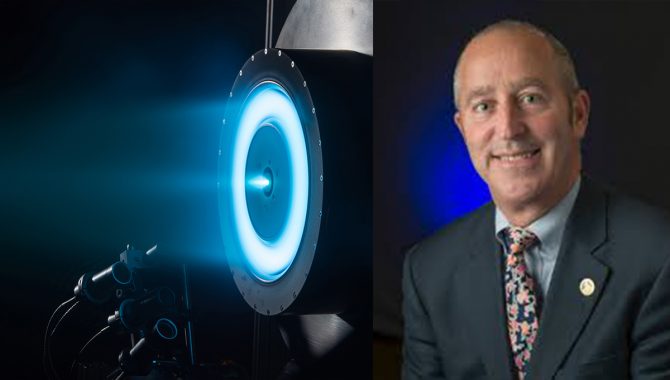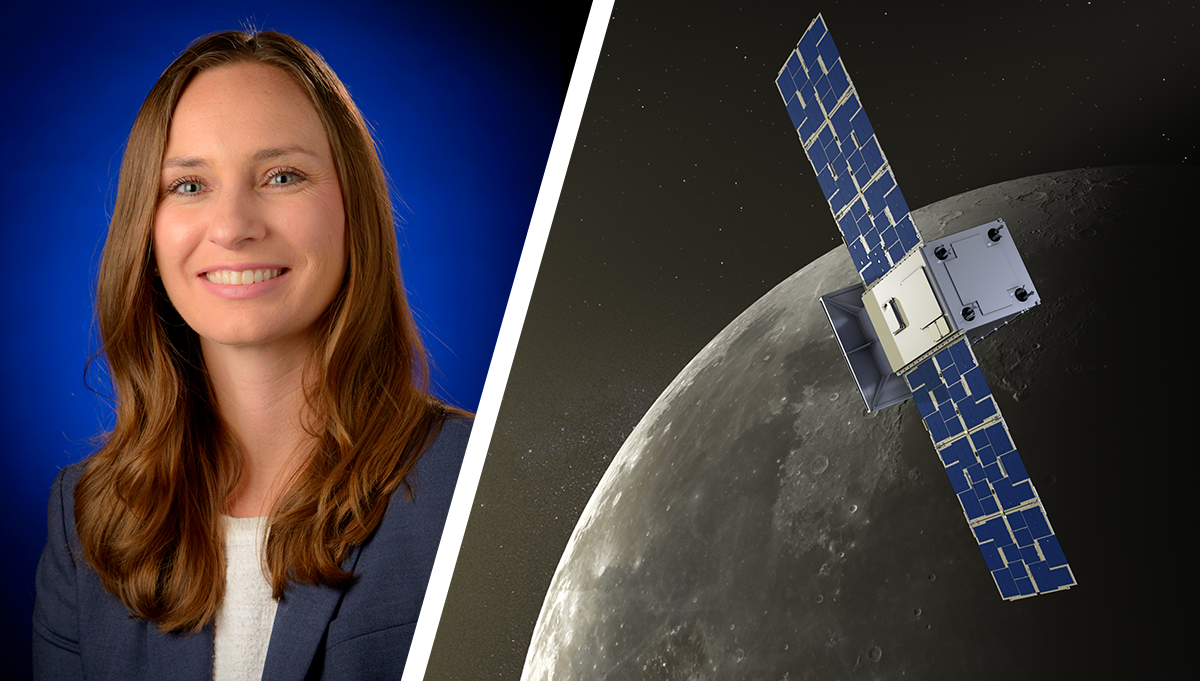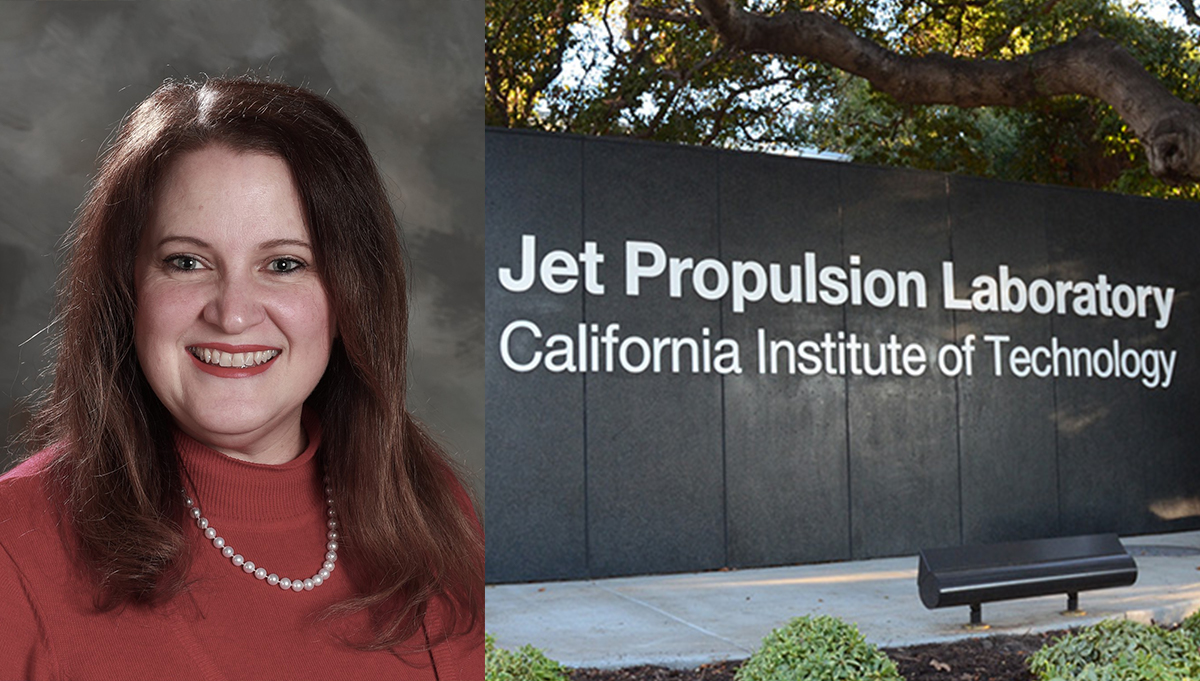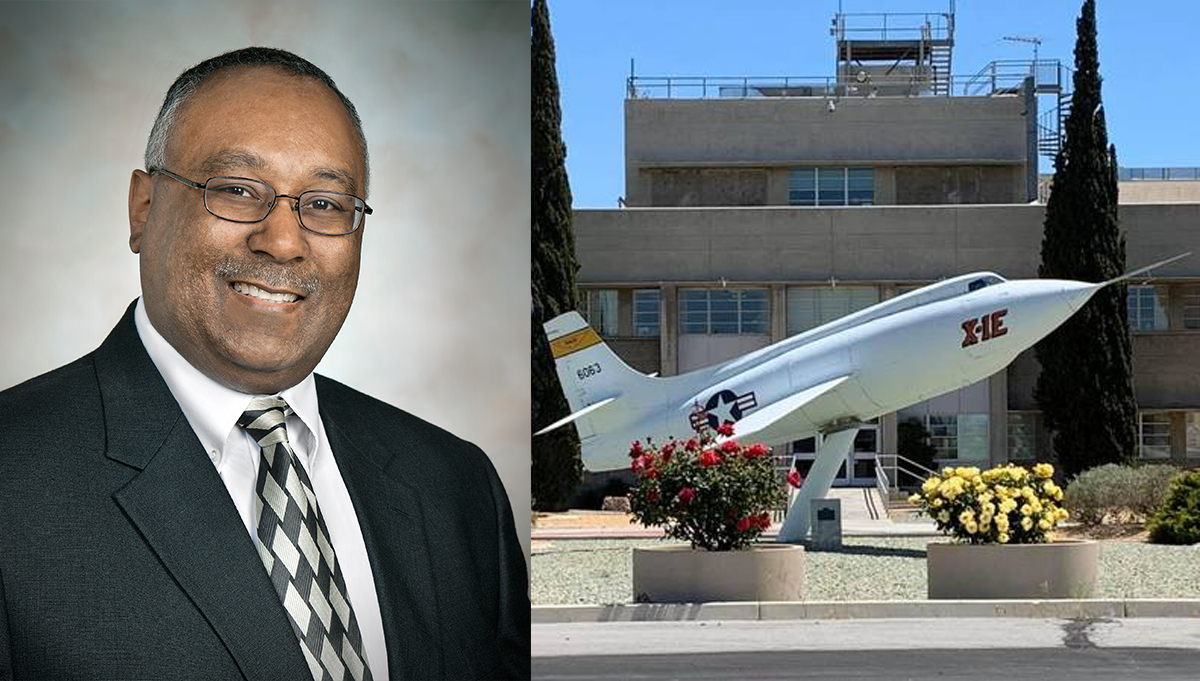
NASA’s Space Technology Mission Directorate CKO Patrick Murphy.
Credit: NASA
Patrick Murphy discusses knowledge sharing in NASA’s Space Technology Mission Directorate.
Disclaimer: This material is being kept online for historical purposes. Though accurate at the time of publication, it is no longer being updated. The page may contain outdated information or broken links. Current Knowledge Community Corner articles are available here.
Patrick Murphy serves as the Chief Knowledge Officer (CKO) for NASA’s Space Technology Mission Directorate (STMD). Murphy, the Director of STMD Strategic Planning and Integration, advises the NASA Space Technology Associate Administrator and Deputy Associate Administrators on long-term strategy, technology investments and tactical direction essential to a return to the Moon and exploration of Mars. He previously served as Resources Management Director for the Office of the Chief Technologist. Murphy joined NASA in 2005 as a Lead Analyst for NASA Headquarters Program Analysis and Evaluation, managing science, aeronautics and education programs.
What are your thoughts on how knowledge sharing affects mission success?
When I think of knowledge sharing itself, it really mirrors the core goals of what STMD is. We’re all about being rapid and giving NASA projects a running start. Through knowledge sharing we give our engineers and innovators a head start with getting to new technologies, which propel agency missions/architectures versus just using legacy or state-of-the-existing technology. STMD is entrusted to take these broad leaps. That’s why the agency and the nation are making the investment in STMD to take those groundbreaking steps with the understanding that we’re going to have failures. Out of all the NASA mission directorates, this is the one mission directorate where we are encouraged to fail — both within NASA and by external stakeholders — with the thinking that we’re going to have some really big wins. Once we’ve achieved that knowledge, then being able to share that knowledge offers a huge steppingstone for NASA and the missions we are implementing across the agency.
To make big steps, you have to have a lot of failures. If we look at Thomas Edison, Benjamin Franklin and the Wright Brothers, we see they had thousands and thousands of failures to get to the point where they achieved flight or electricity. STMD does really, really, really hard things and we take some broad steps. The benefit is we are testing hardware with no risk to human life involved. Some demonstrations involve robotics and artificial intelligence. We’re doing a lot of bench tests — with the goal to get them into space. During testing, since there is no risk to human life, we can take bigger risks. When it comes to human risk, that’s completely different. NASA has the Human Exploration and Operations Mission Directorate that focuses on that, and failure is not an option in those situations.
How do you think NASA’s technical workforce benefits from knowledge sharing?
When it comes to knowledge sharing, it’s really about creating a community here where we get greater diversity, ideas and opportunity to benchmark and plan, including succession planning. The average age at NASA Headquarters is early 50s. At some point this community is going to be retiring, and there’s an awful lot of amazing knowledge that we have at NASA. Succession planning and getting knowledge out there and sharing it is indispensable to the current and future workforce.
For example, back in the 60s we had a lot of engineers that were involved in dust mitigation and experts that really understood lunar dust. We lost a lot of those folks. And now with NASA returning to the Moon in 2024, we were fortunate to be able to get some of that knowledge to take advantage of when we go to the South Pole regions of the lunar surface. We do have a few remaining experts. But just think, if we had looked at knowledge sharing back in the 60s, we would have really benefited from the knowledge that we had from some of our engineers that have retired or passed away since then. So, it really highlights the importance of capturing it now — not only for succession planning, but for the future.
Are there any successful knowledge efforts or best practices in your organization that you’d like to highlight?
There are two within STMD that help to give a taste of why knowledge sharing is so important. When we think about knowledge used to stimulate innovation across NASA, I think of TechPort. This is a place where our innovators who develop technology are able to put it in a communal portal where people can find it, build it and share it. So, we don’t have duplicity of the same type of engineering and technology knowledge that we’re already working. People can go out there and build upon a specific technology readiness level to take it to the next step. So, that’s a great example of where TechPort, which is an STMD-sponsored capability, is used across all the mission directorates.
Another place where engineers and innovators can go and find shared knowledge is Tech Transfer. It’s a great example of how NASA is taking knowledge and using it to stimulate the economy. An example of that is one of the capabilities within Tech Transfer called remote sensing. This area of study is very important to the scientific community. On the Tech Transfer website, NASA provides free and open remote sensing data to the scientific community, other government agencies, and nonprofit organizations. These invited visitors are provided weather information from NOAA satellites currently in orbit. Tech Transfer takes advantage of that data, but there’s another area that is untapped, and that’s the commercial side. NASA’s Technology Transfer Program has created an online resource to promote commercialization of this remote sensing data. It’s a remote sensing toolkit where you can search and find knowledge and information that are being shared. And we’re already getting success stories from that. Knowledge is power. Knowledge is also an economic driver, and we’re seeing that really come to play within our nation.
Do you have a favorite story or example of successful knowledge sharing?
Being a mission directorate, we’ve been asked to get involved with various initiatives across the agency, and one particular initiative is the NASA Digital Transformation effort. It’s looking at how we could transform the agency when it comes to knowledge and looking at it from a digital standpoint. One of my team members had the opportunity to be part of this agencywide effort and took a series of trips to various industries to look at how they were successful with digital transformation and how they share knowledge within their community.
Digital transformation has been a benchmarking opportunity for NASA, and one of the trips was to Georgia Tech. At Georgia Tech, they created what’s called the Smart Cities Initiative. It’s a digital replication of the campus where they could make very succinct, hugely helpful decisions regarding water usage, heating or even actually flow of people throughout the campus. You could look at it from managing people to responding to an emergency. They’re very, very innovative and that’s taking advantage of that knowledge and Georgia Tech sharing it with the broader community. As a follow-on from that, NASA Marshall Space Flight Center and Redstone Arsenal are taking a close look to see if they can employ something fairly similar. Georgia Tech’s use of digital transformation is a really good example of how NASA could apply knowledge to benchmark against other places and take advantage of how a university is managing its knowledge.
Are you observing any trends or cultural shifts that affect knowledge management going forward?
NASA, our nation and world are experiencing cultural shifts like we have never seen. Due to COVID-19, a majority of us are working remotely. This has drastically changed how we are collaborating as a community. Not having to walk to buildings and conference rooms has transformed our use of real-time collaboration. Microsoft Teams and OneDrive are good examples where we all have a document that we can develop real-time amongst ourselves collaboratively. We’re not having to wait. It’s not serial. Things are happening in parallel. And I think knowledge sharing happening in parallel — maybe having a fourth-dimension type of database where we’re able to collaborate that way — is evolving and will give us an opportunity to do things the way we always wanted to. Maybe we’re able to do more real-time brainstorming and we don’t have to all be in a room looking at a whiteboard. So, I really see a shift in that happening in the world when it comes to knowledge transfer or knowledge sharing.
What’s the biggest misunderstanding that people have about knowledge?
I think the biggest misunderstanding in general is ‘what is knowledge?’ It’s basically the ether. It’s Emmet in The Lego Movie, where he gains access to the ‘world of nothingness,’ this idea area. Knowledge is in people’s white space, their gray matter. People know they have the data. You can almost look at it as NASA without OneDrive, SharePoint or the cloud to upload our data. The challenge is in most cases NASA knowledge lives in our heads and on our laptops.
The challenge with that is sometimes our laptops crash, have a catastrophic failure or are lost. In tandem NASA people leave. Life happens — people accept a new opportunity, retire or die — and we lose that knowledge. So, the misunderstanding or misconception is that we’re always going to have access to that knowledge, and we’ll share it ‘someday.’ But people don’t put enough urgency on it. And so, the community commits that one of these days I’ll share what I know. We have all the time in the world to do it, but there never seems to be the time or resources to capture it.
So, I think the misunderstanding is that we’re going to get there, but someday. We don’t have time to do it right now. And I know as an agency right now, we’re very, very focused on the mission of getting to the lunar surface by 2024, having sustainability by 2028, and then on our way to Mars. Having that balance between capturing the knowledge and being able to share it and also meeting our targets is key. I think the biggest misunderstanding is we will have time to do it, and I believe we should have been doing this a long time ago and we need to continue to stay vigilant on it.
I mentioned the challenges of having only a few dust mitigation experts left in the agency. Let’s learn from that and not put things off for tomorrow because tomorrow never comes, and we’re going to wake up and not have that knowledge. Capturing and sharing NASA experts’ knowledge will not only benefit what we’re doing today, but also offer an opportunity to have a way to sustain our mission and prepare the future workforce. NASA continues to be an amazing agency. It’s a national treasure. Let’s protect Fort Knox and save the gold.
Who are the biggest users of knowledge services in your organization?
Within STMD it’s the engineers and innovators that are working on the technology that we’re developing for our NASA architectures as well as our industry, university and government partners. We’re all sharing knowledge to help propel NASA and the nation to do these very hard, very inspiring missions to be able to have a community sustained on the lunar surface and to be able to have footprints on Mars in the 2030s and beyond. So, our biggest users of this knowledge are really all of the STMD community across all the NASA centers, working closely with our fellow mission directorates on the architectures they’re developing and helping to solve the technology gaps that are keeping them from really doing the hard things that we’re trying to solve at NASA.
I think the challenge is providing that knowledge source to a community that doesn’t necessarily know it’s there. A good example of this is my youngest son, who recently read Encyclopedia Brown. While he was reading it, I discovered my six-year-old had no idea what an encyclopedia was. He only knew who Encyclopedia Brown was. So, I explained that the name ‘encyclopedia’ means ‘knowledge of everything.’ And he responded, “Dad, that’s really cool.”
Some of us grew up with encyclopedias on a bookshelf. NASA is our nation’s encyclopedia of amazingness. It’s powerful to be able to provide that NASA encyclopedia to our current and future employees and to be able to have it at our fingertips — whatever media, virtual cloud, virtual space or whatever it’s going to be. It’s important to be good stewards of NASA knowledge so that the agency will continue to be a national treasure.









